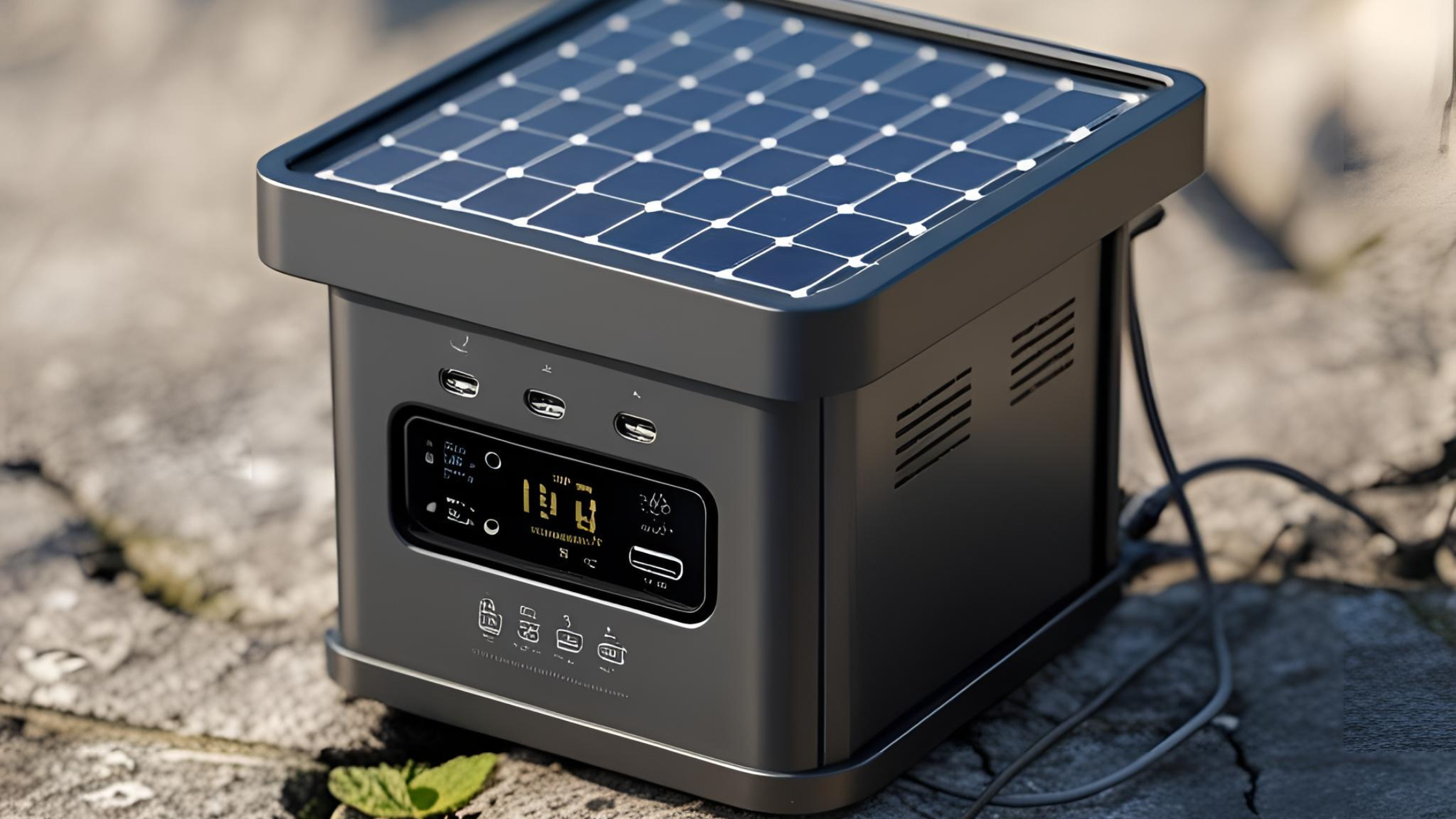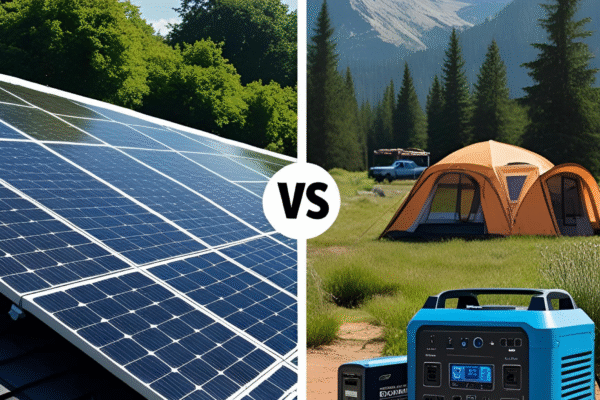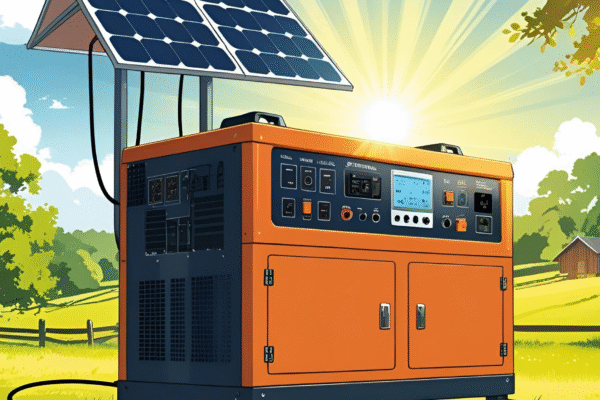Imagine a device no bigger than a carry-on suitcase powering your fridge during a blackout. Sounds impossible? Think again. This article reveals how a tiny solar generator tackles big appliances, from refrigerators to air conditioners. You’ll learn the science behind it, the best models for 2025, and practical steps to harness this technology for your home. Get ready to unlock the secrets of clean, portable power.
What This Article Covers
This post explores how a compact solar generator delivers energy to large appliances. It breaks down the technology, highlights top picks for 2025, and offers tips to maximize your setup. You’ll find real-world examples and data to guide your decision, whether you face outages or seek off-grid living.
How Solar Generators Work
A solar generator captures sunlight and stores it as electricity. Here’s the process:
- Solar Panels: Convert sunlight into direct current (DC) power.
- Battery: Stores the energy for later use.
- Inverter: Turns DC into alternating current (AC) to run household appliances.
- Charge Controller: Regulates power flow to protect the battery.
This system fits into a portable unit, often weighing under 50 pounds. A 2024 study by Renogy shows these devices can store 1,000–5,000 watt-hours, enough for multiple appliances. Curious how this small package handles big loads? The key lies in smart design and capacity.
Can a Tiny Generator Power Big Appliances?
Yes, but it depends on size and appliance needs. Big appliances like refrigerators or microwaves demand high starting watts. For example, a fridge may need 800 watts to start but only 150 watts to run. A solar generator with 2,000 watts output and 1,500 watt-hours capacity can handle this.
- Fridge: Runs for 10 hours on a 1,500Wh generator.
- Microwave: Powers a 1,000-watt unit for 1.5 hours.
- Air Conditioner: Supports a 1,200-watt model for 1 hour with proper battery management.
A tester in Houston used a Bluetti AC200P (2,000W, 2,000Wh) during a 2024 storm. It kept a fridge and lights running for 12 hours. How much power do your appliances need? Check their labels to match them with the right generator.
Top Solar Generators for Big Appliances in 2025
Experts tested models to find the best for 2025. Here are the top picks:
- EcoFlow Delta Pro
- Output: 3,600W
- Capacity: 3,600Wh
- Features: Expandable to 25kWh, supports HVAC systems
- Cost: $3,600
- Why it works: A family of four ran a 1,500W air conditioner and fridge for 2 days during a 2025 outage.
- Jackery Explorer 2000 Pro
- Output: 2,200W
- Capacity: 2,042Wh
- Features: Fast solar charging, lightweight at 43 lbs
- Cost: $2,000
- Why it works: Powered a 700W coffee maker and 500W TV for 3 hours on a camping trip.
- Goal Zero Yeti 6000X
- Output: 6,000W
- Capacity: 5,982Wh
- Features: Handles high surge appliances, 12V outlets
- Cost: $5,500
- Why it works: Supported a 1,800W induction cooker for 3 hours in a remote cabin.
Which model fits your budget and needs? Higher capacity means longer runtime for big appliances.
Key Factors to Consider
Choosing the right solar generator involves these steps:
- Wattage Rating: Match the generator’s output to your appliance’s starting watts.
- Capacity: Ensure enough watt-hours for your usage time.
- Portability: Pick a weight you can move, like Jackery’s 43 lbs.
- Charging Options: Look for solar, AC, and car charging flexibility.
A 2025 EcoFlow report notes that 60% of users underestimate starting watts, leading to overloads. For example, a 1,200W air conditioner may surge to 3,000W at startup. Always add 20–30% extra capacity to avoid issues. What’s the highest-watt appliance in your home?
Real-World Performance
Users prove these generators deliver. A California homeowner used a Delta Pro to power a 1,000W fridge and 800W heater during a 2024 wildfire blackout. The system ran 24 hours with two 400W solar panels recharging it daily.
- Outage Backup: Kept food fresh and heat on for three days.
- Camping: Powered a 600W grill and lights for a weekend.
- RV Living: Ran a 1,200W AC unit for 8 hours off-grid.
These examples show versatility. Have you experienced a power cut? A solar generator could be your solution.
Maximizing Your Solar Generator
Get the most from your device with these tips:
- Calculate Needs: Add up running and starting watts of all appliances.
- Use Solar Panels: Charge during the day to extend runtime.
- Prioritize Loads: Run one big appliance at a time to avoid overload.
- Maintain Battery: Keep it at 20–80% charge to extend life.
A Jackery user in Arizona paired their 2000 Pro with 400W panels. It powered a 900W water pump and 500W fan for 5 hours daily, recharging fully by noon. How will you optimize your setup?
Benefits of Tiny Solar Generators
These devices offer clear advantages:
- Eco-Friendly: Uses renewable solar energy, cutting carbon emissions.
- Quiet Operation: No noise compared to gas generators.
- Portable Power: Moves easily for home or travel use.
- Cost Savings: Reduces reliance on grid electricity over time.
Data from National Grid shows solar adoption grew 50% in 2024, driven by outage fears. A single generator can save $500 yearly on bills. Ready to cut costs and go green?
Challenges to Watch
Small size comes with limits. Consider these:
- Capacity Limits: A 2,000Wh unit may not run a whole house.
- Charging Time: Solar charging takes 4–8 hours, depending on sunlight.
- Weather Dependence: Cloudy days reduce input.
A 2025 SolarReviews test found a Yeti 6000X lost 30% efficiency on overcast days. Plan for backup charging via AC or car. How will you handle low-sun days?
Setting Up Your Solar Generator
Install your unit with these steps:
- Choose Location: Place panels in direct sunlight, avoiding shade.
- Connect Panels: Use MC4 connectors for secure links.
- Plug In Appliances: Match wattage to avoid tripping.
- Monitor Output: Use the display to track battery levels.
A DIY enthusiast built a Renogy 1,000W system in 2024. It powered a 600W TV and 400W fan for a week off-grid. Have you picked your spot yet?
Comparing Solar Generators to Gas Models
Solar beats gas in key areas:
- No Fuel Costs: Solar uses free sunlight.
- Safety: Eliminates carbon monoxide risks.
- Longevity: Batteries last 3,000 cycles versus gas engine wear.
A Popular Mechanics review in 2025 showed solar units outlast gas models by 5 years. Which power source fits your lifestyle?
Future of Solar Generators
Technology advances promise more power. Perovskite cells, tested in 2025, may boost efficiency to 25%. Larger batteries and faster charging are on the horizon. A Clean Energy Reviews forecast predicts 40% cost drops by 2030.
What innovations excite you? Stay tuned for better options.
Take Action Today
A tiny solar generator can power your big appliances with the right setup. EcoFlow Delta Pro, Jackery 2000 Pro, and Goal Zero Yeti 6000X lead the 2025 market. Calculate your needs, pick a model, and start saving. Your home can stay powered, no matter the challenge.
What’s your next step toward clean energy?



